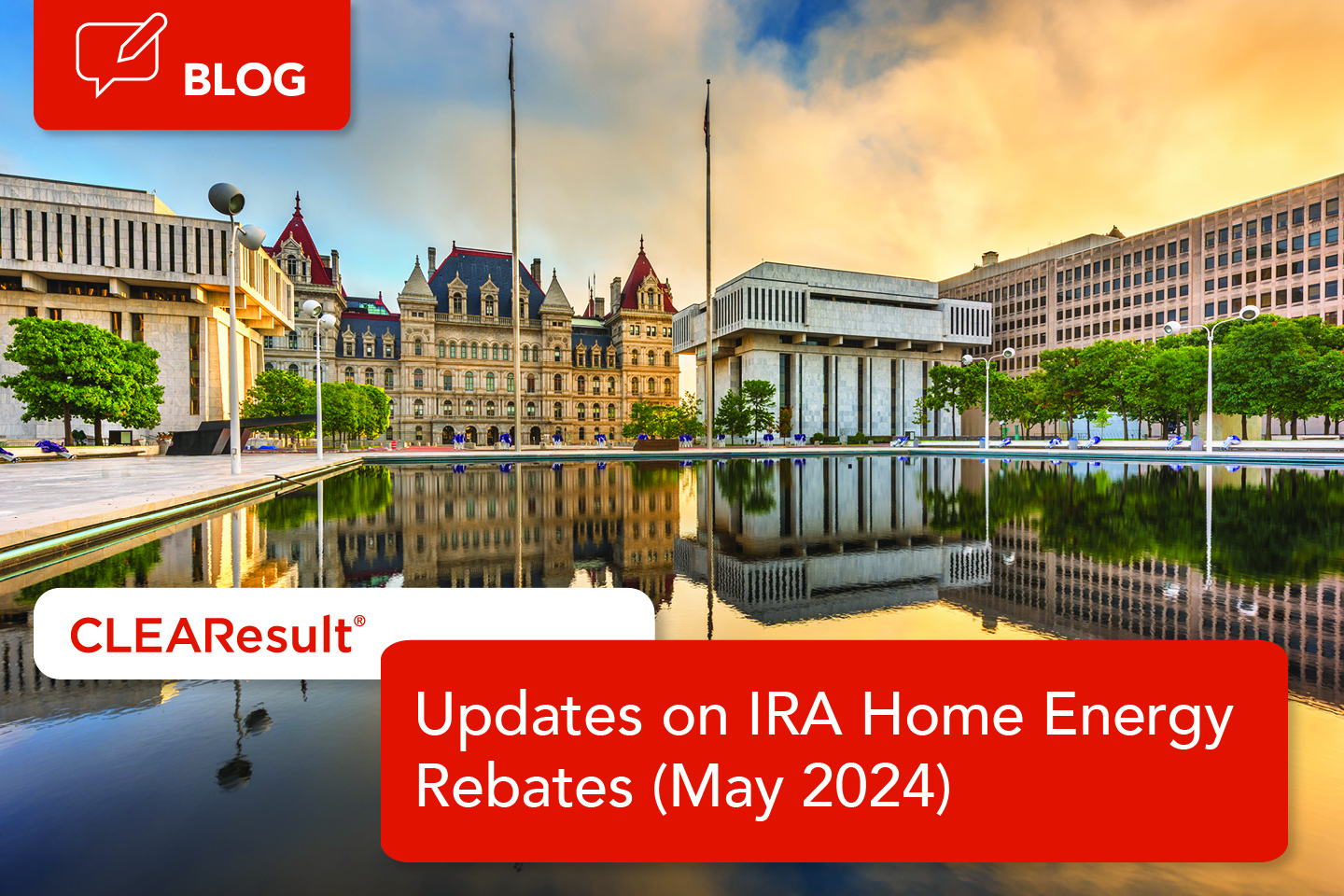Updates on Inflation Reduction Act Home Energy Rebates (May 2024)

Applications for the Inflation Reduction Act (IRA) Home Energy Rebates are rapidly increasing. As these programs drive significant opportunities for energy efficiency across the nation, utilities, partners and homeowners are eagerly following the ongoing developments.
Here are the most recent IRA updates and opportunities for stakeholders.
New York became the first state to secure funding for IRA Home Energy Rebates
On April 18, the Department of Energy (DOE) announced that New York state was awarded over $158 million for its Home Electrification and Appliance Rebates program (HEAR). This is the first approved IRA Home Energy Rebates funding application, signaling the start of the implementation phase for these anticipated programs throughout the U.S. New York’s HEAR program will provide income-eligible customers with rebates for energy efficiency improvements like heat pumps, electrical panels and insulation, which will reduce energy consumption and lower utility bills for households.
Growing interest in Home Energy Rebates programs
Additional applications for the Home Energy Rebates program continue to emerge. Beyond New York, 11 other states have now applied for at least one of the two IRA Home Energy Rebates programs, and it's anticipated that this number will rise quickly in the coming months. At least 20 other states or territories have requested early administrative funding, which sets aside part of each state's allocation to help with preparation for the full funding application. States have until this August to inform the DOE if they intend to apply for Home Energy Rebates funding, with final applications due by January 31, 2025.
March updates to the DOE's IRA program guidance
The DOE released updates in March to its ongoing guidance for state energy offices (SEOs) on the application and implementation of IRA energy programs. The following updates provide utilities and consumers with important details on program operations:
- Education and Outreach Plan requirements: States must develop plans detailing how they will promote Home Energy Rebates program awareness and participation. Utilities are likely to be key in these efforts as programs launch.
- Consumer fact sheet: This summary contains essential information on Home Energy Rebates, including eligibility, incentives and other key details.
- Support for tribal applications: The IRA allocates up to $225 million for grants to Tribal governments and Alaska Native entities. Dedicated resources and documentation support their HEAR funding applications, potentially offering up to $14,000 in household upgrades.
Environmental Protection Agency (EPA) announced $7 billion for Solar for All program
On April 22, the EPA named the recipients of $7 billion in grants intended to create and expand solar programs in low-income and under-resourced communities. This Solar for All program is part of the Greenhouse Gas Reduction Fund, which includes $27 billion in financing for new clean technology deployment and was passed as part of the IRA in 2022.
The EPA’s selection of 60 grant recipients kickstarts the development of this initiative, which will seek to install solar on more than 900,000 homes across America, with programs expected to be available in the fall or winter of 2024. This is another exciting announcement for the future of energy efficiency and the energy transition, with particular focus on under-resourced communities and equitable outcomes.
Climate tech investments surge by 38% in 2023
Fueled by aggressive tax incentives, grants and loans from the IRA and the 2021 Bipartisan Infrastructure Law, the U.S. saw a $239 billion infusion into clean energy and transportation in 2023. This represents a nearly 40% increase, largely attributable to the burgeoning EV and battery manufacturing sectors, alongside solar production – industries that have each expanded by over 100% since the IRA's enactment. Data from the Clean Investment Monitor indicates that clean energy investments now comprise 5% of all private investment in structures, equipment and consumer products in the U.S.
Visit our Inflation Reduction Act page to learn more about these exciting programs.